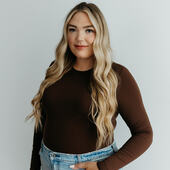Published November 28, 2023
Combating Seasonal Affective Disorder

As the days get shorter and there is less daylight, you may start to develop feelings of sadness. While many people experience the “winter blues” some people have a type of depression called seasonal affective disorder (SAD).
What is seasonal affective disorder?
Seasonal affective disorder is a type of depression that occurs during certain seasons of the year – most often fall or winter. It is thought that climates that have shorter days and less daylight may trigger a chemical change in the brain, ultimately leading to symptoms of depression.
Symptoms
The first step is to determine how much your symptoms are interfering with your daily life.
Feeling down but still able to take care of yourself and others.
Having some trouble sleeping.
Having less energy than usual, but still able to do your job, schoolwork, or housework.
These are more mild symptoms, and if they lasted less than 2-weeks, you’ll find a number of activities below that could help make you feel better:
Quality sleep each night
Low impact exercise
Spending 20 minutes outside daily
Spend quality time with family and friends
Eating healthy food
Happy Light light therapy
If these activities do not help, or your symptoms last longer than 2-weeks or are getting worse, please talk to a health care professional.
More severe symptoms to consider that should be addressed with a professional:
Social withdrawal
Oversleeping
Gaining weight
Craving foods with lots of sugar
The Family Health Clinic recommends taking 2,000 IU of Vitamin D daily.
Resources
Alaska Behavioral Health (907) 563-1000
National Alliance on Mental Health 1-800-950-6264
Military & Family LIfe Counselor (907) 384-1534





